Roma and Sassuolo only had 6 wins from their 17 league games in 2018 prior to this match. Both of them failed to win against Turinese clubs in the previous game week of Serie A, and none of them wanted to fail in this festive season. Roma proved they are the better side with a dominant 3–1 win over Roberto De Zerbi’s side. This piece will provide you with a tactical analysis on how the match unfolded.
Starting XI
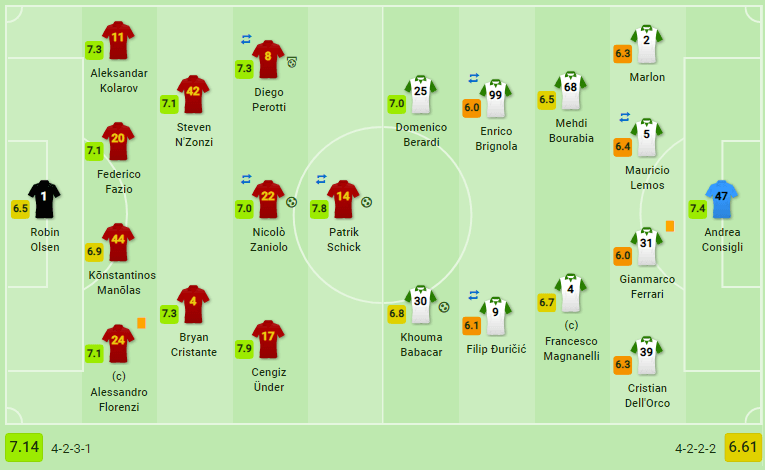
Roma lined up in a more offensive 4–2–3–1, moving from the 5–3–2 they used previously against Juventus. Davide Santon had to make way for Diego Perotti, who played as LW in this match. Nicolo Zaniolo moved up just behind the main striker, Patrik Schick, while Bryan Cristante and Steven N’Zonzi provided balance in midfield. Big names like Edin Dzeko, Javier Pastore, and Stephan El Shaarawy had to start the game from the bench.
Even though the lineup above showed Sassuolo used 4–2–2–2, they actually played in a 4–3–3 shape with the trio of Mehdi Bourabia-Francesco Magnanelli-Filip Djuricic in the engine room. Enrico Brignola and Federico Berardi provided width while Khouma Babacar played alone up top. Sassuolo’s bench was filled with some interesting names like Alessandro Matri, Manuel Locatelli, and Federico Di Francesco (son of Roma’s manager, Eusebio).
Roma’s aggression
On the ball, Roma’s 4–2–3–1 relied a lot on their wings. They rarely tried to penetrate Sassuolo’s block from the middle. Off the ball, Roma tried to press Sassuolo high by keeping their shape rigidly. With that approach, Di Francesco tasked his team to close every passing lane so Sassuolo’s CBs/FBs couldn’t build the attack swiftly. Roma’s rigid-shaped pressure was also focused heavily on the ball. Their players weren’t afraid to abandon the ball-far side at times. It paid dividends because they nullified Sassuolo’s build-up completely.
When they didn’t have the ball, Roma would move into a mid-block 4–4–2 with Zaniolo and Schick upfront, especially after they got the lead.
In the middle of the park, Cristante and N’Zonzi always kept a close distance between them (maximum 15 yards), especially in defence. This allowed Roma more solidity and gave Sassuolo problems when they tried to pass their way through Roma’s block.
Sassuolo silenced
Using 4–3–3, Sassuolo tried to build their attacks slowly from the back but Roma’s aggressive-and-numerous high-press provoked them to change their approach. Instead, Sassuolo often tried to play more direct with quick combinations, utilising their forwards’ pace and dribbling ability. Sassuolo’s 4–3–3 looked like a 4–3–0–3 for most of the times since the forwards didn’t drop to help build-ups, instead, they waited for direct balls to come into their feet. Sometimes, in order to receive the ball from the back, Babacar would drop between the lines and then combine with one of the wingers.
When Sassuolo got some solid minutes on possession, they would focus their attack on their left side, with Cristian Dell’Orco provided overlapping runs next to Brignola. Poorly, Marlon, the right back, never went into Roma’s pitch in the first half. Berardi, who played as RW, was usually isolated because of Marlon’s lack of offensive help, therefore nullified his threats.
Schick’s smartness separated the sides
Roma tried to bring the ball into the final third as early as possible, using (lofted) through-balls from Alessandro Florenzi or Cristante. The 35–50 yard through-balls were targeted for Schick. When the pass was made, the striker had already started his run between Sassuolo’s pair of CBs, Mauricio Lemos and Gianmarco Ferrari.
Roma used that approach to punish Sassuolo’s uncoordinated high defensive line. Schick’s smart runs were always well-timed; truly a nightmare for Lemos-Ferrari. Another part of this approach is Cengiz Under’s drop in the right flank. When he dropped, he pulled Dell’Orco with him; this opened more space for Schick to run into.
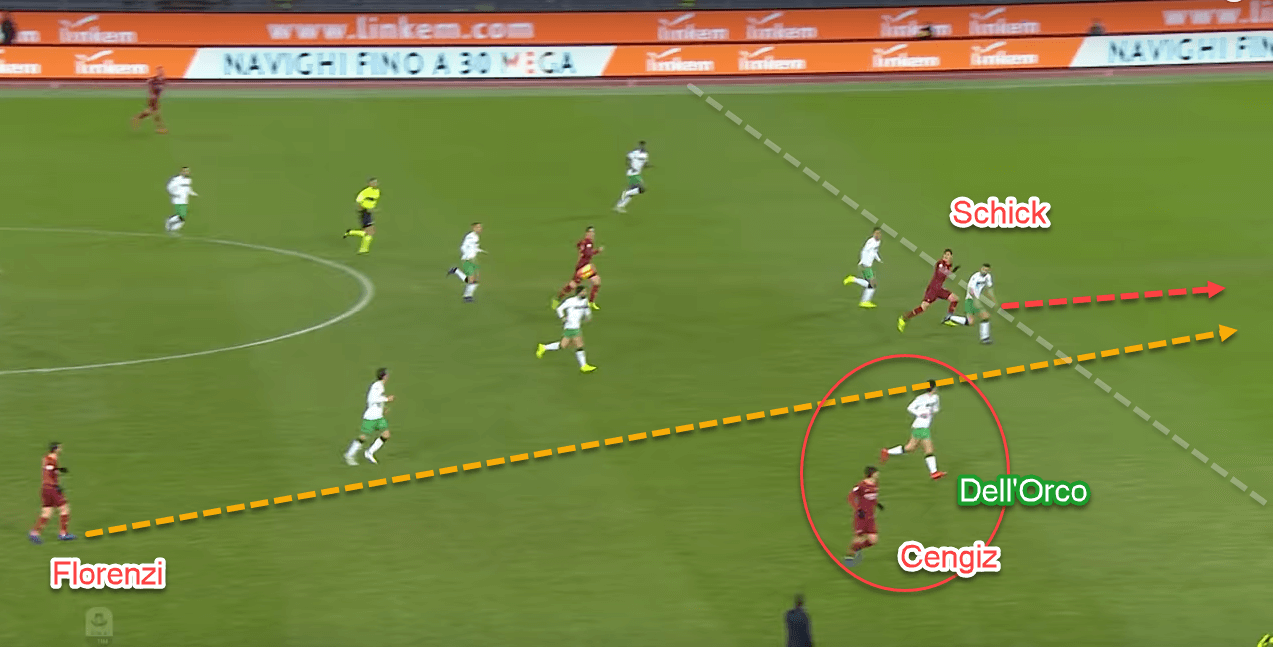
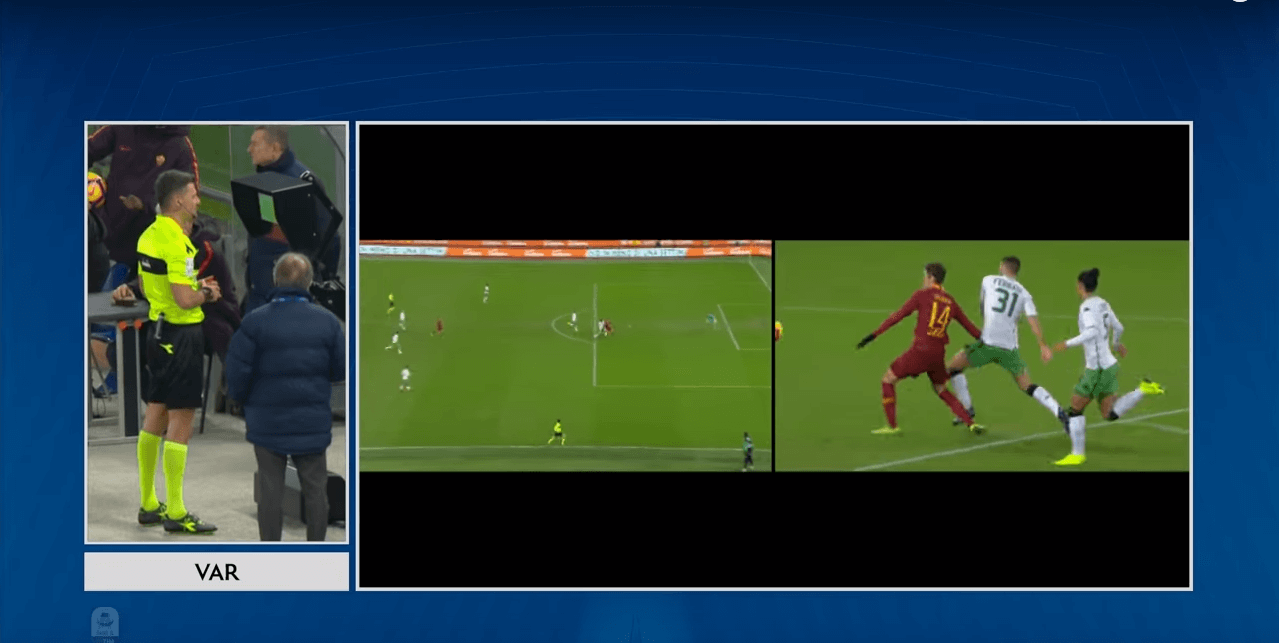
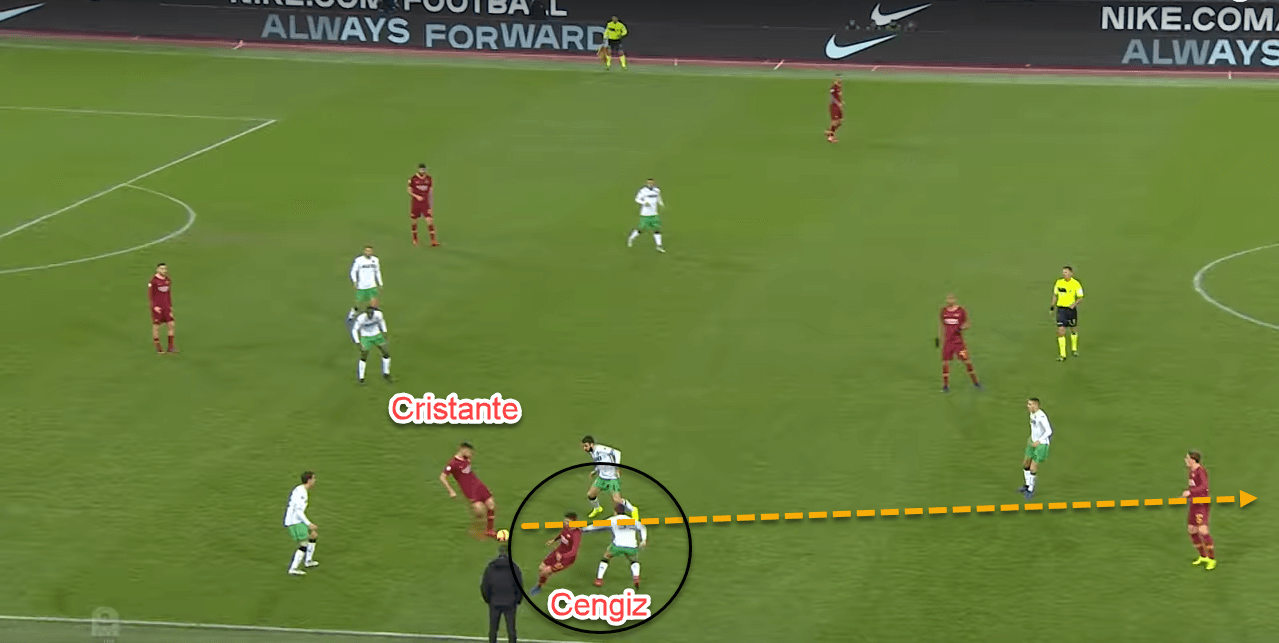
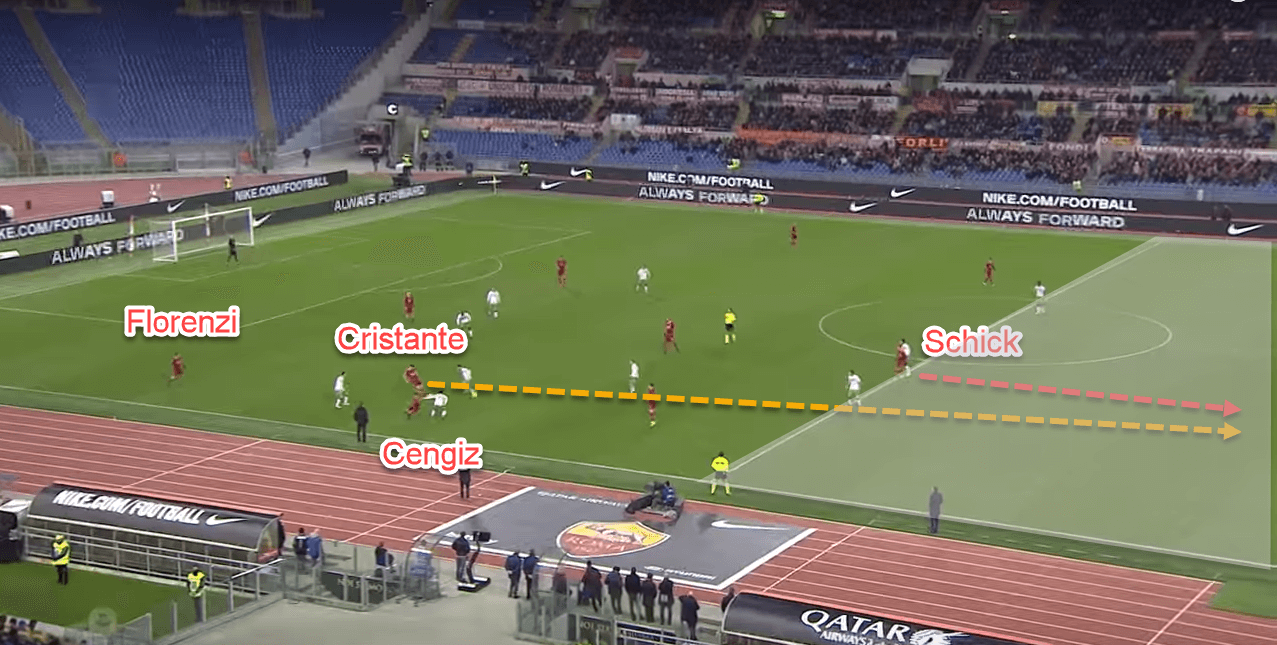
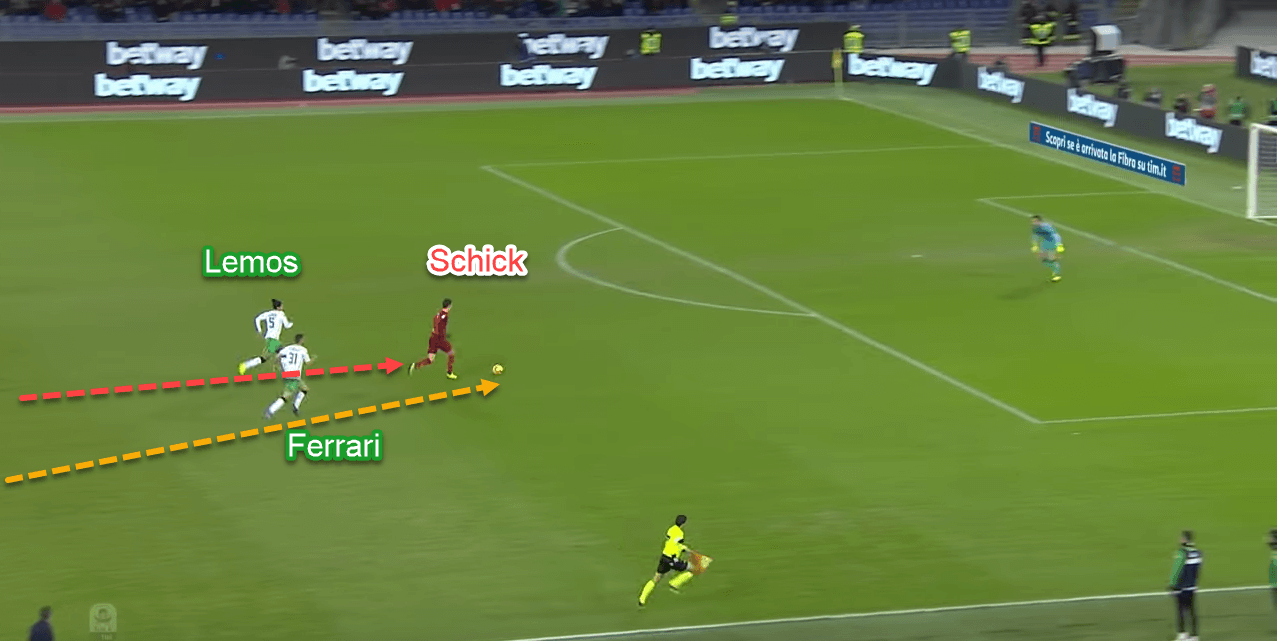
Apart from his pace, Schick was also a good target for long-balls because of his size. He often drifted into the halfspaces to receive and combine with the attacking midfielders.
This Roma approach was mainly focused on the right side, while their left-sided players (Diego Perotti and Aleksandr Kolarov) tended to play slower but higher near Sassuolo’s box. Perotti had the tendency to cut inside while providing the space needed for Kolarov to make his overlapping runs. The two then usually combined to provide crosses into the box.
Unlucky
Sassuolo should have got a goal in the early minutes when Robin Olsen’s poor clearance almost got punished by Berardi. The Italian’s long-range attempt was denied by the Swedish international because he arrived at his goal at the perfect time.
Later, in the 19th minute, Schick almost made an own-goal after deflecting an outswinging Sassuolo corner. He had to thank the goal-line technology for not giving the goal against his team.
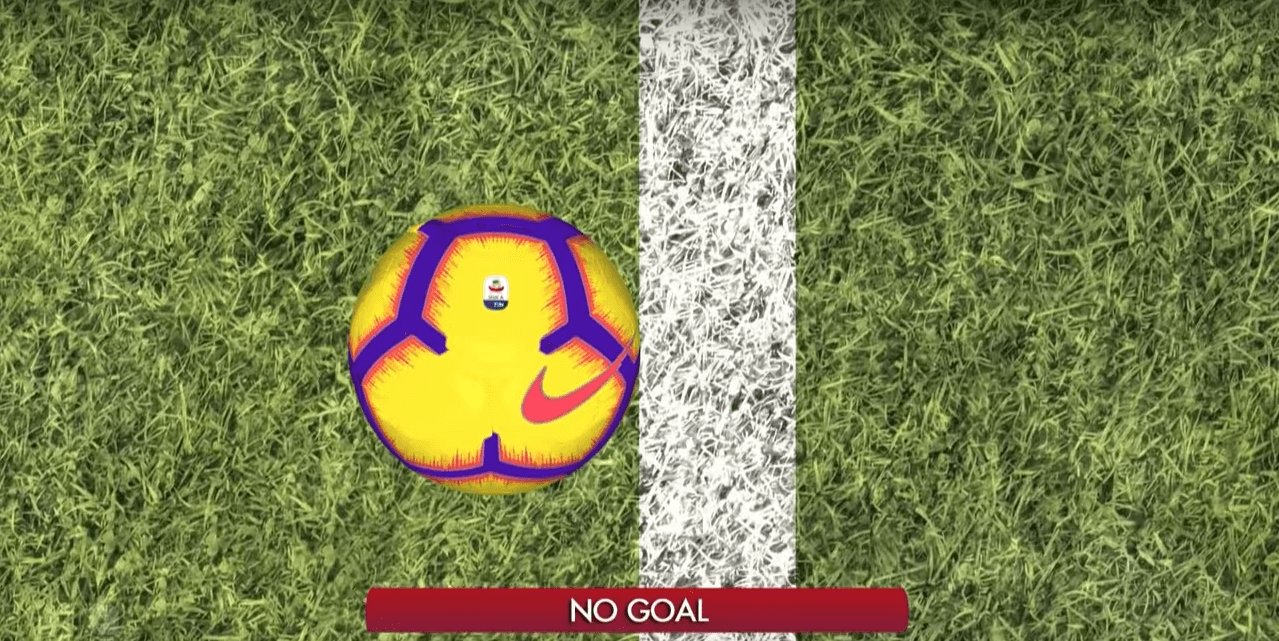
Second half adjustments
Pol Lirola came into the pitch for the second half, replacing under-performed Mauricio Lemos for the visitors. Marlon, the initial RB, had to make way for Lirola and moved to RCB. Lirola provided a fresh air in attack for Sassuolo. Credits to him, Sassuolo didn’t only focus their attack on the left-hand side for the entire second half.
Roma reacted brilliantly to that change, to say the least. Both Lirola and Dell’Orco were so aggressive and very willing to join the attack, they actually sacrificed a lot of space behind them.
Roma changed their approach to react against De Zerbi’s adjustment. Roma would try to exploit the space left by Sassuolo’s fullbacks by letting Cengiz and Perotti stayed high. More, Zaniolo wasn’t afraid to drift wide so he could receive through-balls from the back. The 19-year-old then opened his goal account for Roma midway the second half; after a bursting run from the right flank and a cheeky chip over Consigli.
In the second half, Roma’s fullbacks were not shy to roam forward, either by carrying the ball or by making overlaps. They would try to make a cross when they’ve reached the final third.
Conclusion
Di Francesco’s plans worked brilliantly to punish De Zerbi’s bold defensive option. Although the latter made some adjustments for the second half, the home side’ manager came out as the better manager in this match after reacted brilliantly to De Zerbi’s changes. He also successfully maintained his team aggression in both aspects of the game.
To be honest, Sassuolo were lucky they didn’t concede more than three goals. Their captain, Consigli, played brilliantly between the sticks and made some stunning saves to save Sassuolo from a bigger upset.
If you love tactical analysis, then you’ll love the digital magazines from totalfootballanalysis.com – a guaranteed 100+ pages of pure tactical analysis covering topics from the Premier League, Serie A, La Liga, Bundesliga and many, many more. Get your copy of the FIRST of two December issues for just £4.99 here or preorder the SECOND of the December issues with an annual membership right here.

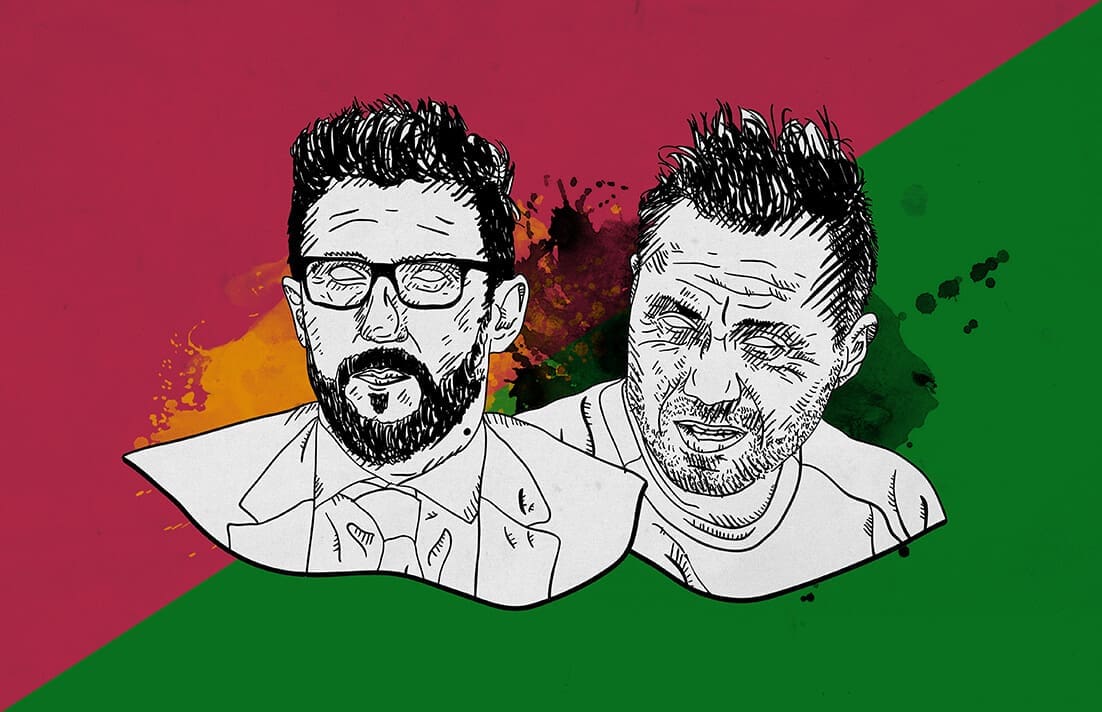


Comments